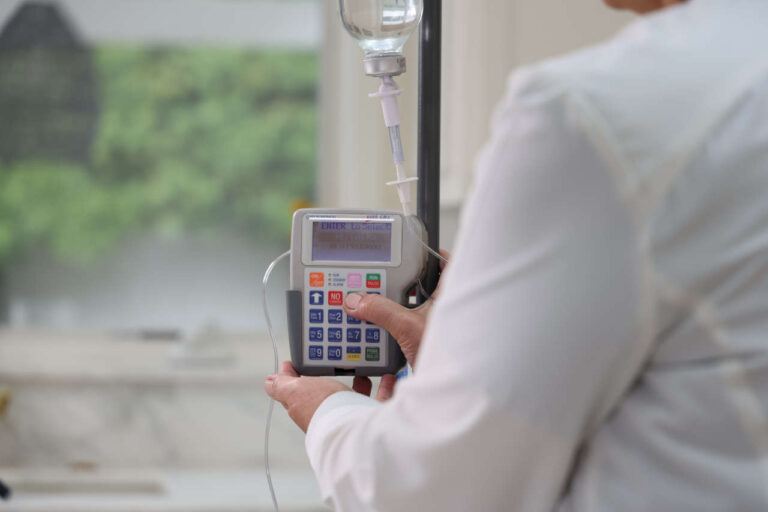
Intravenous immunoglobulin (IVIG) is a safe, FDA-approved, and efficacious treatment therapy for chronic inflammatory demyelinating polyneuropathy (CIDP). CIDP is a long-term chronic neurological disorder that worsens over time and affects around 5 to 7 out of 100,000 individuals.
Get Your IVIG Dose
At-Home InfusionIn CIDP, abnormal immune cells attack healthy cells, specifically the myelin sheath of peripheral nerves (neurons). This attack can lead to functional disabilities, such as muscle weakness, slow nerve conduction, and loss of sensation in patients.
There is no specific cure for CIDP. However, doctors have prescribed IVIG for CIDP over the last two decades as a first-line therapy to ease its symptoms and lessen complications.
IVIG Mode of Action
In IVIG therapy, healthy immunoglobulins (antibodies) extracted from the donors’ plasma are rapidly infused into the veins of CIDP patients. These healthy antibodies prevent the immune cells from attacking and destroying the myelin sheath of peripheral nerves.
The detailed working mechanism or therapeutic effects of IVIG in CIDP is not precisely known; however, it is thought that different modes of action are involved.
Standard IVIG Dose for CIDP Patients
Based on several clinical studies, the standard IVIG dosage for CIDP treatment is 2 g/kg or (20 ml/kg) with an infusion duration of 3 to 5 hours. This initial loading dose is administered intravenously for over 2 to 5 days, followed by a maintenance dosage at around 1 g/kg or (10 ml/kg) over 1 day every 3 to 4 weeks [1].
In younger CIDP patients, IVIG is administered at 1g/kg or (1ml/kg) over 4 to 6 hours for 2 days.
In some cases, the standard IVIG dose can be ineffective for some patients; therefore, higher or repetitive IVIG infusions are often considered to achieve sufficient effectiveness. For instance, in some severe and persistent CIDP cases, patients who don’t respond well to the standard dose are treated with a high IVIG dose of 3 g or 30 ml/kg/month for 5 consecutive days [2].
However, the next dose could vary depending on the patient’s health status, degree of treatment response to immunoglobulins, and improvement in CIDP symptoms.
Get IVIG Copay Assistance
IVIG Financial AssistanceIVIG Success Rate in CIDP

The main goal of IVIG for CIDP treatment is to substantially reduce the patient’s symptoms, improve their body’s functional ability, prevent relapse, and maintain long-term remission.
Unlike standard CIDP treatments, such as corticosteroids and plasmapheresis (plasma exchange), IVIG has a more rapid response and high success rate. Improvement in CIDP symptoms can be seen within one month after IVIG infusions.
Several clinical studies have reported successful results with IVIG for CIDP treatment.
- A randomized controlled trial conducted on 117 CIDP individuals demonstrated that 54% of the patients on IVIG treatment showed improved functional disability at 24 weeks compared to the placebo rate of 21%. Moreover, 60% of patients showed maximal IVIG response by 6 weeks. Significant improvements in muscle strength and grip strength were also observed.
- Similarly, a systematic review of five clinical trials conducted on 235 CIDP subjects found that patients who received IVIG treatment showed improvement in disability compared to placebo.
Based on clinical evidence, IVIG is an effective and well-tolerated treatment with promising results in treating CIDP. IVIG for CIDP can also be a long-term option due to its low rate of long-term side effects.













